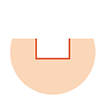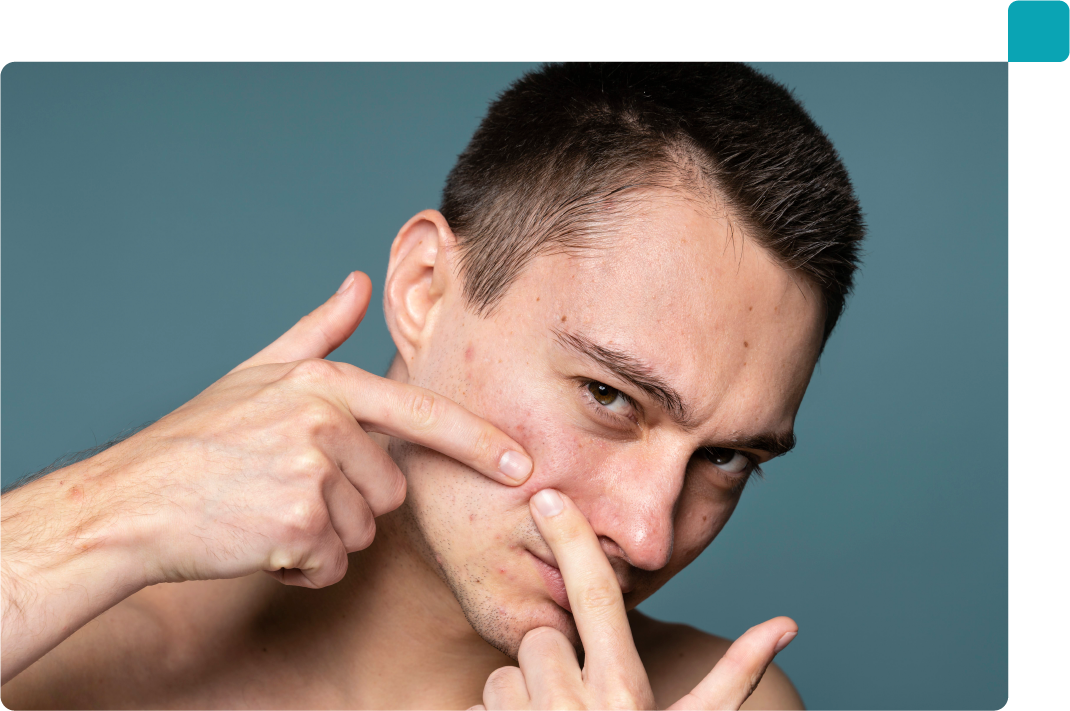Condition
Acne Scars
Acne scars occur as a result of inflammatory acne. When acne swells and breaks the follicle wall, the skin attempts to repair the damage by forming new collagen fibers. However, the repair process may not be smooth, leading to the formation of acne scars.
Types of Acne Scars

Keloid

Icepick

Boxcar

Rolling
What causes it
What causes Acne Scars?
When acne penetrates the skin deeply, it can damage both the skin and the tissue beneath it. When the skin experiences damage to the tissue wall, it produces collagen to repair the lesion. However, the collagen buildup may not be as smooth as the skin’s original texture, leading to changes in color, texture, and firmness, which can result in the appearance of a scar.
The type of scar depends on how much collagen the body produces:
Hypertrophic scars
Hypertrophic or Keloid scars are raised scars caused by excessive wound healing. These scars may appear bulkier, and they can sometimes be itchy or painful. For hypertrophic scars, the goal of treatment is to flatten and reduce the visibility of acne scars.
Atrophic scars
Atrophic scars are sunken scars that occur when wound healing is insufficient. For atrophic scars, the goal of treatment is to improve the appearance of the scar by stimulating collagen production.
Treatment of acne scars mainly works by triggering collagen production to smooth out indented scars.

Treatment Options
Microlaser is a leading collagen stimulation laser designed to reset and renew problematic skin. The laser delivers heat to the skin, stimulating the body's natural repair process to rebuild lost collagen. This encourages the growth of new skin to replace acne scars. The entire remodeling process results in smoother and plumper skin.
Subcision is a simple procedure for treating atrophic scars. It involves inserting a small needle to break apart the scar tissues that cause the scar to be pulled into deeper layers of the skin. After releasing the scar, it can return to the surface and smooth out naturally.
Intralesional injection therapy is a procedure for treating hypertrophic scars. It involves injecting a steroid solution directly into the scar, helping to reduce inflammation and collagen production, which can improve the appearance of the scar.
Similar Conditions
Acne is a common skin condition where tiny holes in the skin, known as hair follicles or pores, become clogged with sebum and dead skin cells. This can lead to the accumulation of bacteria, causing inflammation.
Skin pigmentation disorders affect the color of the skin and are caused by an excess of melanin production. They can occur in small patches, cover large areas, or affect the entire body.
Facial pores are openings in the skin surface that contain sweat and sebaceous glands. When facial pores are clogged with sebum and dirt, it causes the skin to stretch and pores to appear enlarged.
Schedule A Consultation
Being results driven, GEM Clinic provides consultations personally by our doctors to assess client's concerns. Our doctors will determine the best suited treatment to deliver the most optimal results for you!